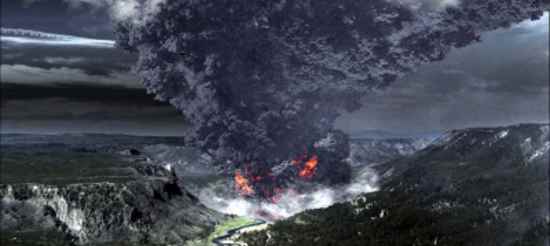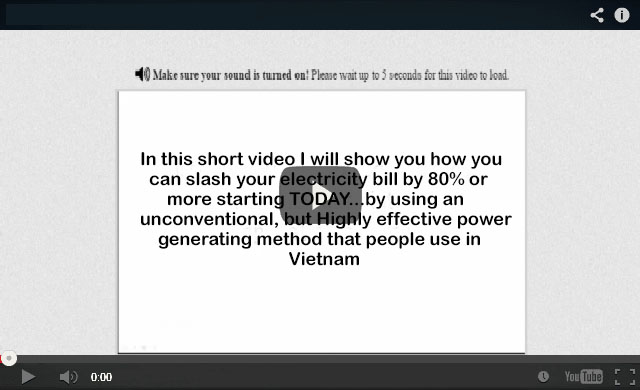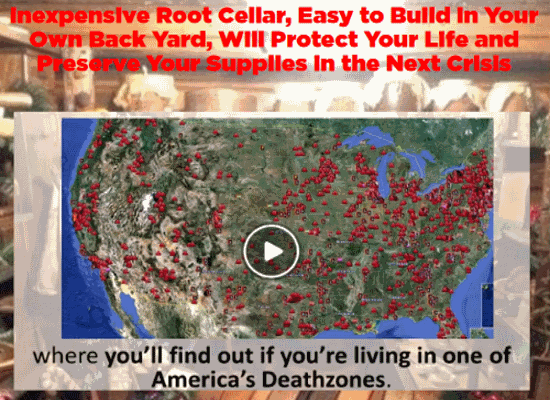
One day it will happen. Scientists assure us that one day the absolutely massive Yellowstone supervolcano will once again experience a Category 8 eruption, and if it happened today it would “literally tear the guts out of the United States of America and will devastate the entire planet”.
That is why what has been happening at Yellowstone volcano in recent months is so alarming. We know that the ground has been rising and that “a 465-mile-long piece of molten rock” is moving upwards directly under Yellowstone. And we also know that the major geysers at Yellowstone super volcano were more active last year than in any other year in any of our lifetimes. Are these signs that an eruption is coming? We better hope not, because as Dr. Michio Kaku recently told Fox News, there is “a sleeping Godzilla underneath Yellowstone”… Dr Kaku told Fox News: “Forget the image of Yogi Bear representing Yellowstone. “We’re talking about a sleeping Godzilla underneath Yellowstone, that if it erupts in a maximum eruption called Category 8, it can literally tear the guts out of the United States of America. “Instead of having 50 states of the Union, we would have 30 states of the Union.“
In the Yellowstone volcano update, the USGS revealed a total of 121 earthquakes were recorded in the Yellowstone area in December 2018 alone. When Yellowstone supervolcano blows, life as you have known it will instantly be over. If you are not in the immediate kill zone, you will have an opportunity to try to survive, but it won’t be easy. One survivalist expert suggests that everyone should “head east as fast as you can”… He added: “Zone one, which is a radius of 100 miles, could see 70,000 people die instantly. “Zone two, which starts after 100 miles, would be covered in 10ft of volcanic ash at 450C. “
After the second zone, your chances of surviving increase, but still head east as fast as you can. “Beyond zone six is where you would be the safest in the US for the short term, but the wind will greatly determine where ash falls.” If Yellowstone volcano were to erupt today, none of our lives would ever be the same again from that moment on.
What If The Yellowstone Volcano Erupted? Why is NASA Worried? To Drill to Stop Yellowstone From Erupting
Beneath Yellowstone National Park in the western United States, lies a hot, upwelling plume of mantle. Heat from the mantle melts the overlying rocks and the resulting magma pools close to Earth’s surface. Areas such as these are known as volcanic hotspots.
Occasionally, molten rock from a hot spot will erupt.
Three enormous eruptions occurred at the Yellowstone hotspot 2.1 million, 1.3 million, and 640,000 years ago. Two of these released so much material that the area is often referred to as a supervolcano.
Will the Yellowstone supervolcano erupt in your lifetime?
According to the U.S. Geological Survey,
A supervolcano is a volcano that at one point in time erupted more than 1,000 cubic kilometers of deposits.
That is enough material to fill up Lake Erie twice; Lake Erie is one of the Great Lakes, and it has a volume of 480 cubic kilometers.
Although fears of a Yellowstone volcanic blast go viral every few years, there are better things to worry about than a catastrophic supereruption exploding from the bowels of Yellowstone National Park.
Scientists at the U.S. Geological Survey’s (USGS) Yellowstone Volcano Observatory always pooh-pooh these worrisome memes, but that doesn’t mean researchers are ignoring the possible consequences of a supereruption. Along with forecasting the damage, scientists constantly monitor the region for signs of molten rock tunneling underground. Scientists scrutinize past supereruptions, as well as smaller volcanic blasts, to predict what would happen if the Yellowstone Volcano did blow.
Here’s a deeper look at whether Yellowstone’s volcano would fire up a global catastrophe. The Yellowstone Supervolano is an active volcano beneath the Yellowstone National Park, a sprawling area straddling Wyoming, Idaho and Montana in the United States. Given its eruption pattern, it could be ready to blow at any time. What would this mean for America, Canada and the rest of the world.
Probing Yellowstone’s past
Most of Yellowstone National Park sits inside three overlapping calderas. The shallow, bowl-shaped depressions formed when an underground magma chamber erupted at Yellowstone. Each time, so much material spewed out that the ground collapsed downward, creating a caldera. The massive blasts struck 2.1 million, 1.3 million and 640,000 years ago. These past eruptions serve as clues to understanding what would happen if there was another Yellowstone megaexplosion.
If a future supereruption resembles its predecessors, then flowing lava won’t be much of a threat. The older Yellowstone lava flows never traveled much farther than the park boundaries, according to the USGS. For volcanologists, the biggest worry is wind-flung ash. Imagine a circle about 500 miles (800 kilometers) across surrounding Yellowstone; studies suggest the region inside this circle might see more than 4 inches (10 centimeters) of ash on the ground, scientists reported Aug. 27, 2018, in the journal Geochemistry, Geophysics, Geosystems.
The ash would be pretty devastating for the United States, scientists predict. The fallout would include short-term destruction of Midwest agriculture, and rivers and streams would be clogged by gray muck.
People living in the Pacific Northwest might also be choking on Yellowstone’s fallout.
“People who live upwind from eruptions need to be concerned about the big ones,” said Larry Mastin, a USGS volcanologist and lead author of the 2014 ash study. Big eruptions often spawn giant umbrella clouds that push ash upwind across half the continent, Mastin said. These clouds get their name because the broad, flat cloud hovering over the volcano resembles an umbrella. “An umbrella cloud fundamentally changes how ash is distributed,” Mastin said.
But California and Florida, which grow most of the country’s fruits and vegetables, would see only a dusting of ash.
A smelly climate shift
Yellowstone Volcano’s next supereruption is likely to spew vast quantities of gases such as sulfur dioxide, which forms a sulfur aerosol that absorbs sunlight and reflects some of it back to space. The resulting climate cooling could last up to a decade. The temporary climate shift could alter rainfall patterns, and, along with severe frosts, cause widespread crop losses and famine.
But a Yellowstone megablast would not wipe out life on Earth. There were no extinctions after its last three enormous eruptions, nor have other supereruptions triggered extinctions in the last few million years.
“Are we all going to die if Yellowstone erupts? Almost certainly the answer is no,” said Jamie Farrell, a Yellowstone expert and assistant research professor at the University of Utah. “There have been quite a few supereruptions in the past couple million years, and we’re still around.”
However, scientists agree there is still much to learn about the global effects of supereruptions. The problem is that these massive outbursts are rare, striking somewhere on Earth only once or twice every million years, one study found. “We know from the geologic evidence that these were huge eruptions, but most of them occurred long enough in the past that we don’t have much detail on what their consequences were,” Mastin said. “These events have been so infrequent that our advice has been not to worry about it.”
A far more likely damage scenario comes from the less predictable hazards — large earthquakes and hydrothermal blasts in the areas where tourists roam. “These pose a huge hazard and could have a huge impact on people,” Farrell said.
Supereruption reports are exaggerated
Human civilization will surely survive a supereruption, so let’s bust another myth. There is no pool of molten rock churning beneath Yellowstone’s iconic geysers and mud pots. The Earth’s crust and mantle beneath Yellowstone are indeed hot, but they are mostly solid, with small pockets of molten rock scattered throughout, like water inside a sponge. About 9 percent of the hot blob is molten, and the rest is solid, scientists reported on May 15, 2015, in the journal Science. This magma chamber rests between 3 to 6 miles (5 to 10 km) beneath the park.
Estimates vary, but a magma chamber may need to reach about 50 percent melt before molten rock collects and forces its way out. “It doesn’t look like at this point that the [Yellowstone] magma reservoir is ready for an eruption,” said Farrell, co-author of the 2015 study in the journal Science. [Can You Outrun a Supervolcano? Maybe, Study Finds]
How do researchers measure the magma? Seismic waves travel more slowly through hot or partially molten rock than they do through normal rock, so scientists can see where the magma is stored, and how much is there, by mapping out where seismic waves travel more slowly, Farrell said.
The magma storage region is not growing in size, either, at least for as long as scientists have monitored the park’s underground. “It’s always been this size, it’s just we’re getting better at seeing it,” Farrell said.
Watch out for little eruptions
As with magma mapping, the science of forecasting volcanic eruptions is always improving. Most scientists think that magma buildup would be detectable for weeks, maybe years, preceding a major Yellowstone eruption. Warning signs would include distinctive earthquake swarms, gas emissions and rapid ground deformation.
Someone who knows about these warning signals might look at the park today and think, “Whoa, something weird is going on!” Yellowstone is a living volcano, and there are always small earthquakes causing tremors, and gas seeping from the ground. The volcano even breathes — the ground surface swells and sinks as gases and fluids move around the volcanic “plumbing” system beneath the park.
But the day-to-day shaking in the park does not portend doom. The Yellowstone Volcano Observatory has never seen warning signs of an impending eruption at the park, according to the USGS.
What are scientists looking for? For one, the distinctive earthquakes triggered by moving molten rock. Magma tunneling underground sets off seismic signals that are different from those generated by slipping fault lines. “We would see earthquakes moving in a pattern and getting shallower and shallower,” Farrell said. To learn about the earthquake patterns to look for, revisit the 2014 eruption of Bardarbunga Volcano in Iceland. Both amateurs and experts “watched” Bardarbunga’s magma rise underground by tracking earthquakes. The eventual surface breakthrough was almost immediately announced on Twitter and other social media. As with Iceland, all of Yellowstone’s seismic data is publicly available through the U.S. Geological Survey’s Yellowstone Volcano Observatory and the University of Utah.
“We would have a good idea that magma is moving up into the shallow depths,” Farrell said. “The bottom line is, we don’t know when or if it will erupt again, but we would have adequate warning.”
There are no signs right now that Yellowstone could be heading to any sort of gigantic eruption—in fact, there is little sign of any time of eruption. Sure, there are all the noises of a “restless caldera” such as the hot springs, geysers, ground deformation, earthquakes, but in a place where we know there is some amount of partially molten magmatic goo down there, this is to be expected. However, there is little evidence that that magma is in a state that could erupt, and it’s likely the process to make it eruptable would take much longer than a human lifetime to transpire. If you read otherwise, unless it is from the US Geological Survey, be skeptical.
So, why is NASA worried? I don’t think they actually are (and if you look at the article that started this on the BBC, you’ll see exactly that). Rather, just like pondering what to do about a potential asteroid impact, they wanted to consider if anything could be done if Yellowstone started to show signs of a massive eruption. Really, the short answer is no, you can’t do anything, at least with our current technology and understanding. However, being scientists, they speculated and considered a number of options:
(1) releasing pressure
(2) cooling the magma.
But there is bad news. An examination of the shape and composition of crystals formed in previous eruptions indicate that the molten material experienced a rapid ascent to the surface, and didn’t end up sitting in pools closer to the surface before being ejected. This suggests that a recharging of the deep magma reservoir could lead to relatively rapid eruptions, and there might not be any clear sign of the magma moving towards the surface from there that would tip us off to the coming eruptions.
All of which suggests that monitoring the deep magma reservoir is probably the best way to understand what Yellowstone might be up to.
Now, the NASA “plan” tries to get around that problem by circulating water to keep things cool. This is something like your car’s radiator, which moves heat out by sending coolant around the engine and bringing it to the front to cool down again. However, this assumes that no new heat is being added, such as new magma from deep below that would be fueling the potential eruption. In the short-term, we might get one heck of a geothermal power plant, but in the end, it would likely not be enough.
When all is said and done, a massive eruption at Yellowstone, or any other caldera for that matter, isn’t a question we should answer by trying to stop it. Instead, we need to build resilience into our society to survive after such an event. This means things like seed vaults, international agreements to evacuate and emigrate volcanic refugees, water protection measures. A lot less sexy than, “Let’s pump water into a magma chamber!” but the sort of stuff that helps ensure survival rather than trying to hit the mid-court shot.

Books can be your best pre-collapse investment.
Carnivore’s Bible (is a wellknown meat processor providing custom meat processing services locally andacross the state of Montana and more. Whether your needs are for domestic meator wild game meat processing)
The Lost Book of Remedies PDF ( contains a series of medicinal andherbal recipes to make home made remedies from medicinal plants and herbs.Chromic diseases and maladies can be overcome by taking the remediesoutlined in this book. The writer claims that his grandfather was taughtherbalism and healing whilst in active service during world war twoand that he has treated many soldiers with his home made cures. )
Easy Cellar(Info about building and managing your root cellar, plus printable plans. The book on building and using root cellars – The Complete Root Cellar Book.)
The Lost Ways (Learn the long forgotten secrets that helped our forefathers survive famines,wars,economic crisis and anything else life threw at them)
LOST WAYS 2 ( Wordof the day: Prepare! And do it the old fashion way, like our fore-fathers did it and succeed longbefore us,because what lies ahead of us will require all the help we can get. Watch this video and learn the 3 skills that ensured our ancestors survival in hard times offamine and war.)
Survival MD (Best Post Collapse First Aid Survival Guide Ever)
Conquering the coming collapse (Financial advice and preparedness )
Liberty Generator (Build and make your own energy source)
Backyard Liberty (Easy and cheap DIY Aquaponic system to grow your organic and living food bank)
Bullet Proof Home (A Prepper’s Guide in Safeguarding a Home )
Family Self Defense (Best Self Defense Strategies For You And Your Family)
Survive Any Crisis (Best Items To Hoard For A Long Term Crisis)
Survive The End Days(Biggest Cover Up Of Our President)


